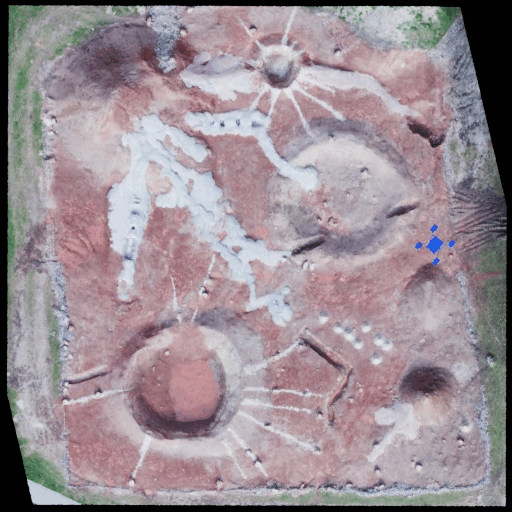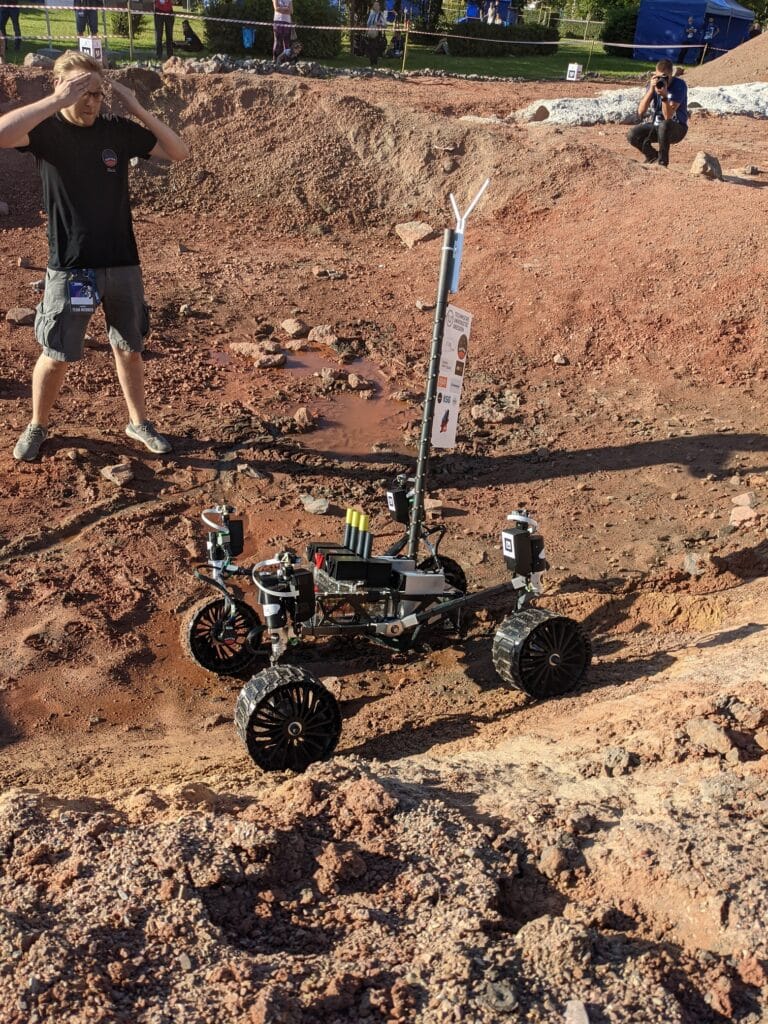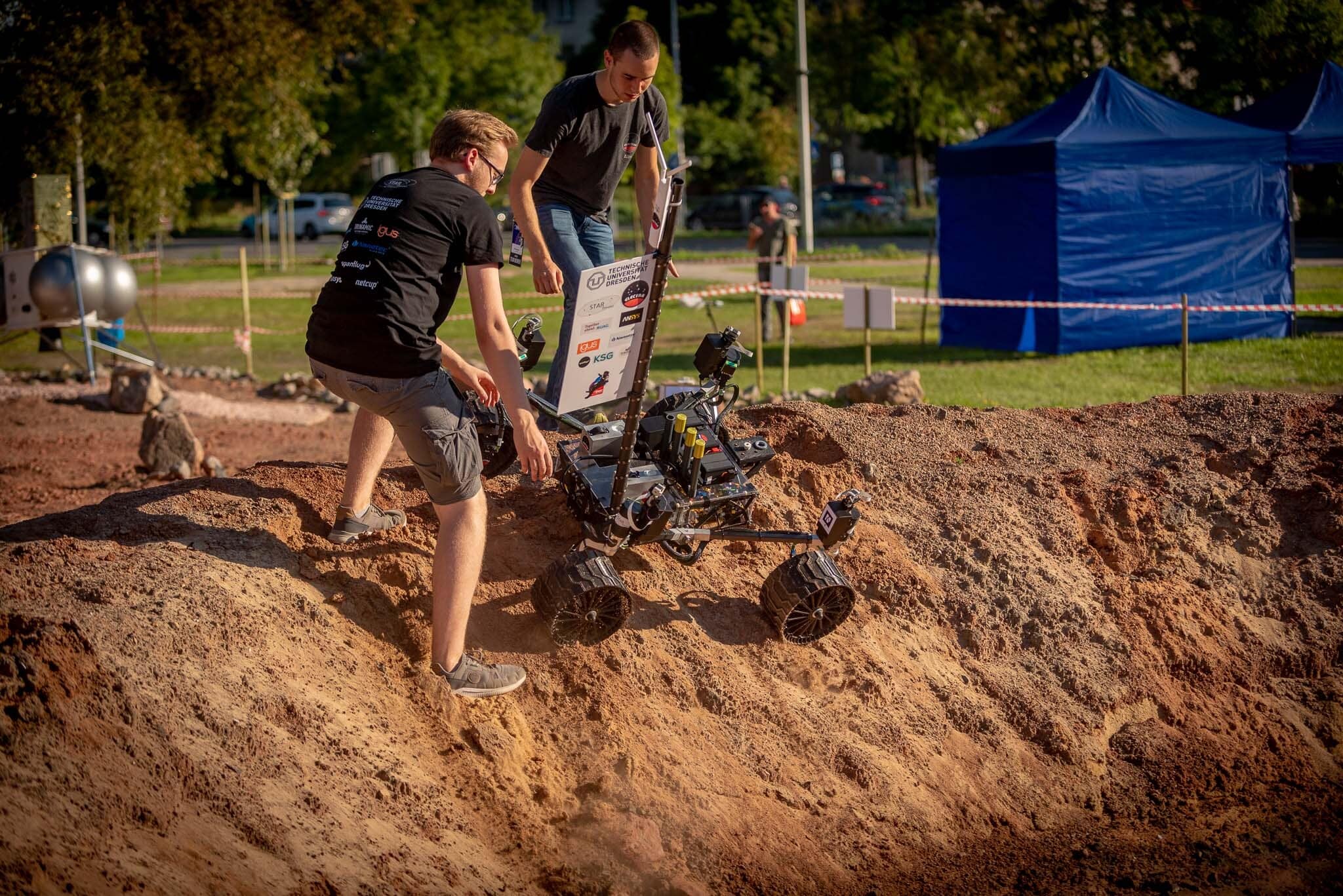About independent electrical systems
This is the moment when the locomotion system engineer of ELECTRA died internally. The actual disaster struck later when we realized we had lost connection to the rover. We determined that the batteries had come loose, so I went out to apply some duct tape to hold them in place for the rest of the task. While pushing the batteries back into their sockets, the force was a bit too much for the differential gearbox. That was when the locomotion system engineer died for the second time… At least we were able to drive again afterward!
But there is much more to this story. During the early stages of ELECTRA’s development, we planned to use a 48 V system for the locomotion system and a 24 V system for everything else in the rover. To use the same batteries for both systems, I decided on using two 24 V batteries in series for the 48 V system and a single battery for 24 V. Later, we discovered that 48 V motors are harder to procure, so we switched back to a 24 V system on locomotion as well, but kept the separate locomotion and general purpose electrical systems. Further into the project – deep within the significant chip shortage of 2021 – we needed to change our BLDC electronic speed controller (ESC) to an off-the-shelf solution since the chips for our own development were not available in time. The new ESC was fully powered from the same source as the locomotion system and was no longer dependent on the general purpose system for the motion controller. Everything seemed fine… so far.
Navigation was our first task on-site at ERC 2021. Since we lacked software developers, no autonomous attempt was done and we drove manually with cameras. While ELECTRA was going over very tough terrain, our team in the tent (where the remote operation takes place during the competition) suddenly lost connection to the rover. Two minutes later, the connection to the rover returned on its own, seemingly standing at the same spot as before. “No worries,” we thought – “it must have just been some interference.” We drove the last little bit to the first waypoint and were spot on. When moving to the next waypoint, we again drove over the same rough terrain as before – and lost connection again. But this time, the connection didn’t come back on by itself. I began to fear that the batteries weren’t properly seated in place. We decided to accept the loss of a few points (due to the ‘rover touching penalty’ from the competition rules) and I went to fix the batteries by hand. When I left the tent and went onto the Mars-yard, I couldn’t find the rover at first glance, because I looked for it where we thought we lost connection – then I saw all the people on the other side of the Mars-yard in a crater – not where I expected the rover to be!
What actually happened – during both connection losses – was that only the general purpose battery came loose, but the locomotion battery stayed in place and the locomotion system had power the whole time. With the original system this issue was considered and a cut to one of the systems would have led to a complete stop of the rover. But during the change to the new ESC, this failsafe feature was no longer on our minds. Therefore, when the system shut down, the ESCs and the motors continued to move the rover according to the last command they received – which was “drive at velocity x”. The first time we lost connection, ELECTRA continued to drive by itself doing a curve and – by sheer luck – returned to the same spot doing a full circle before reconnecting again. The second time we lost the connection the rover went straight, drove across big parts of the Mars-yard, went up the crater rim, almost fell over (as seen in the thumbnail of this blog-post), slipped down, and finally stopped while trying to climb out of the crater again. In the gif you can get a feel for the odyssey ELECTRA had across the Mars-yard.

(Green: ELECTRA is controlled from the tent | Yellow: ELECTRA drives without connection to the tent)
The rest went as described initially – I pushed the batteries back into the rover, pressed too hard and broke the differential gearbox in the centre of the rover. That’s why, for the rest of the challenge, we either had a not-so-differential-bar that fixed the gearbox in place, or we drove around with the chassis of ELECTRA at an angle.
As it is often, major failures can come from the smallest mistakes. We learned our lesson about how changing even small parts of the design require analysis of their impact, especially on safety implications.
~ Jonas Weis, STAR Dresden e.V. from Germany.

(ELECTRA at an angle after Jonas repaired it)

